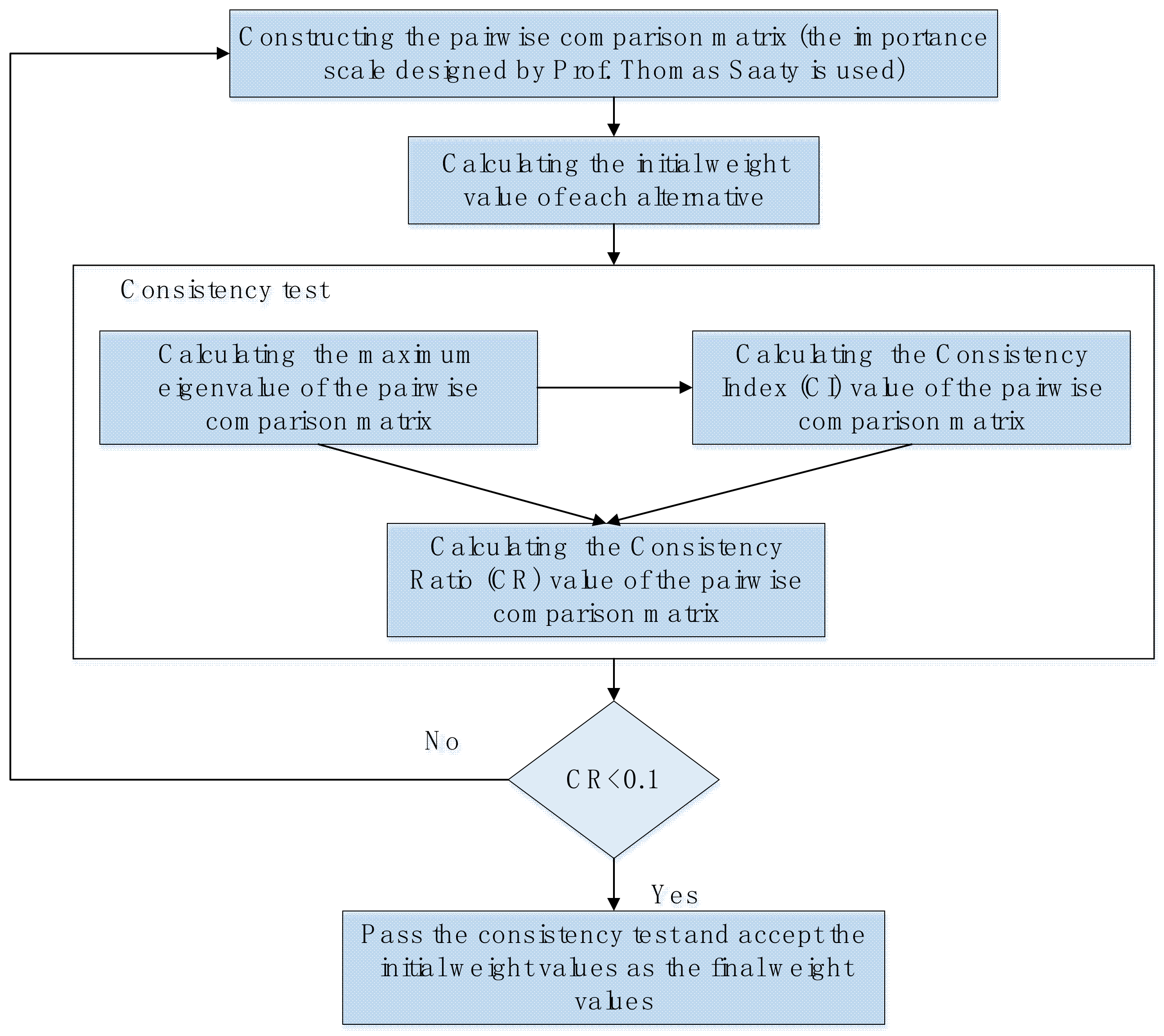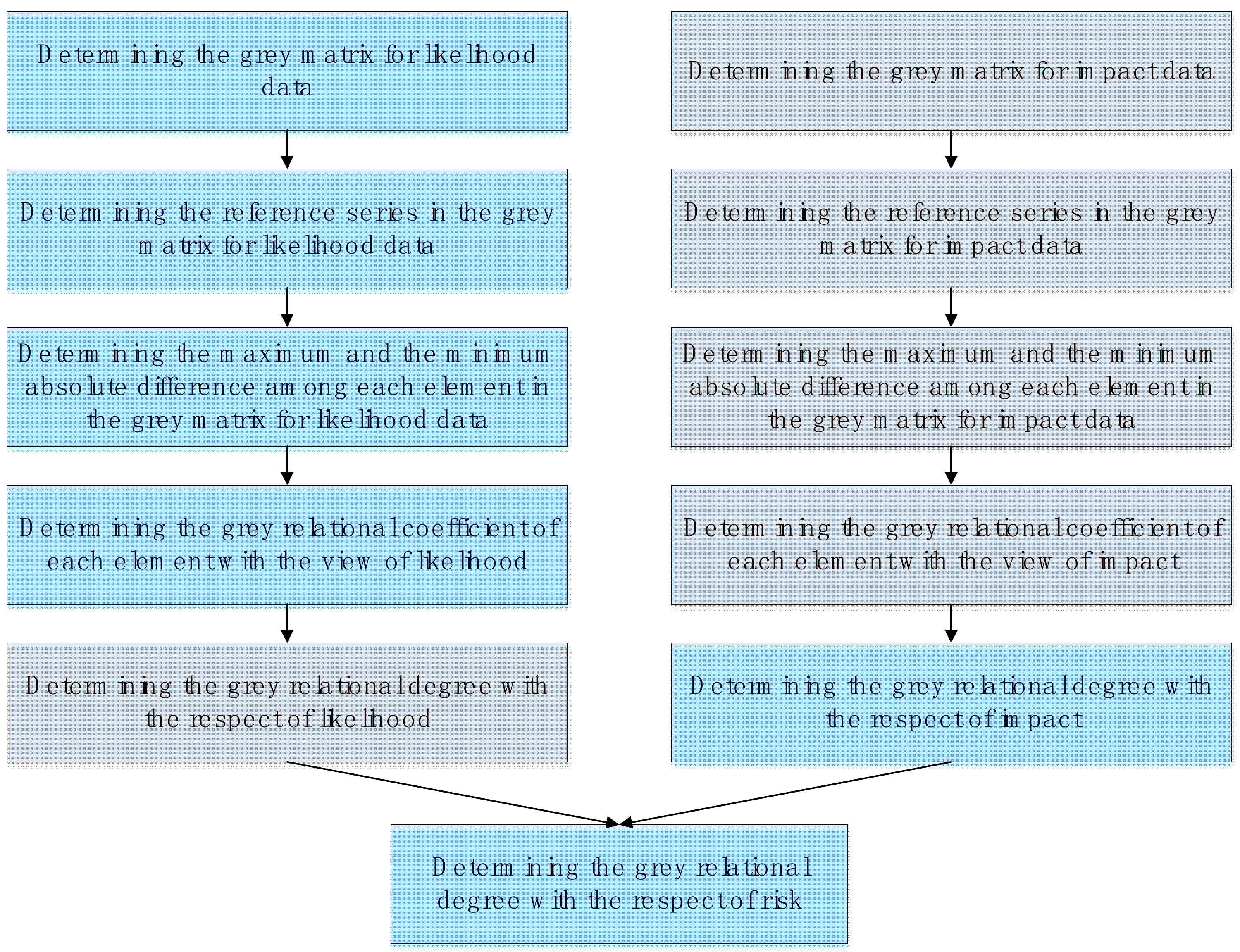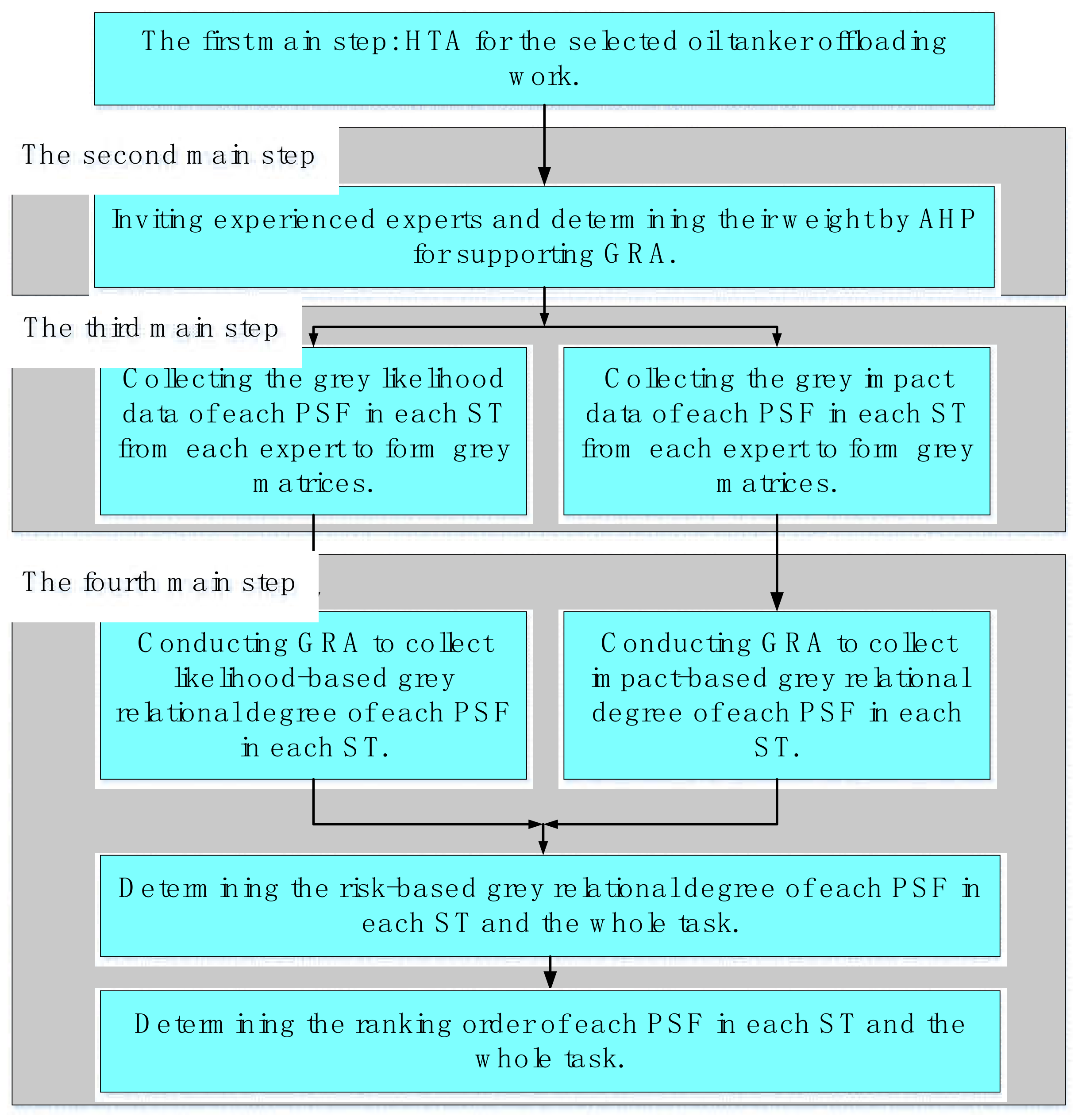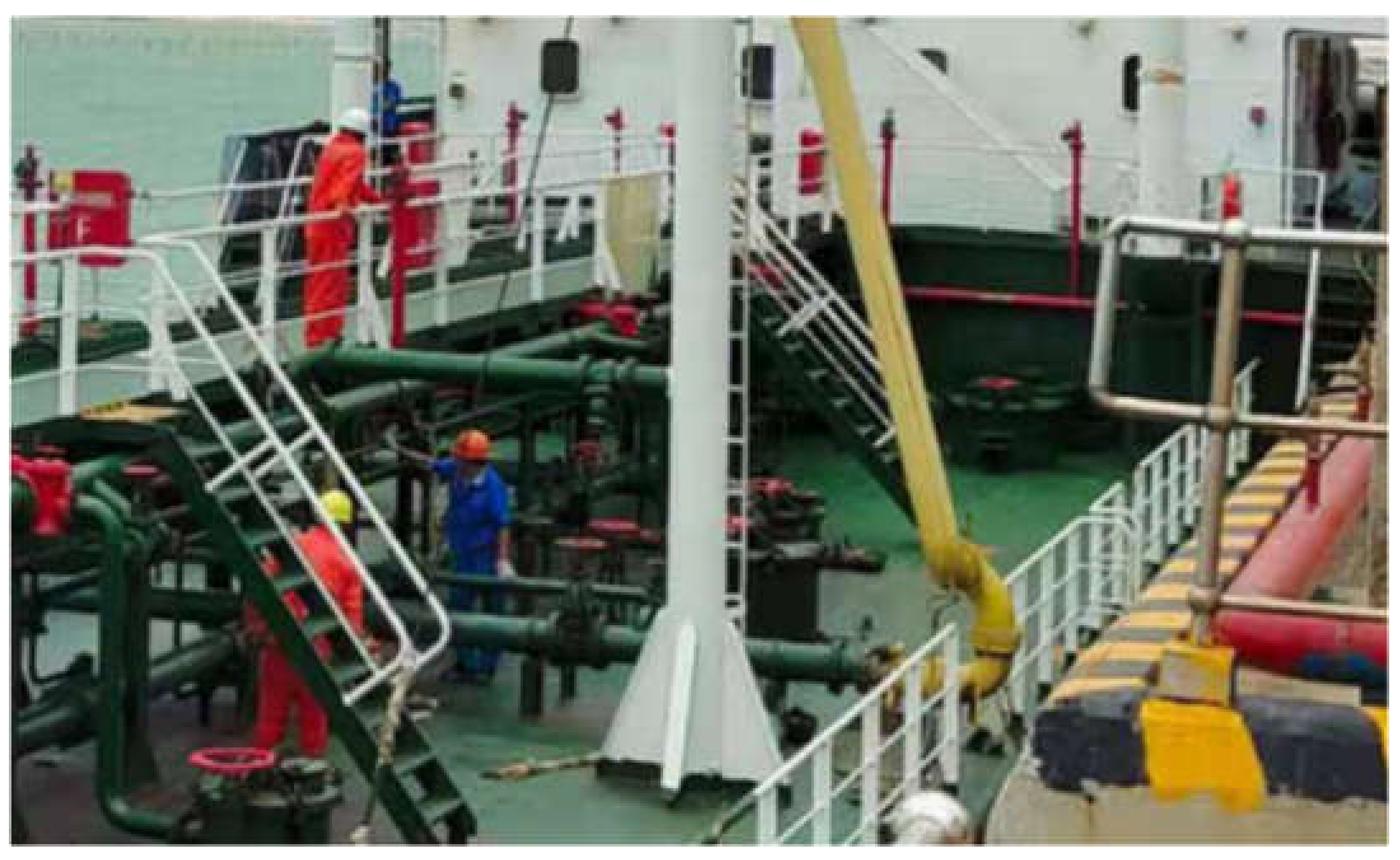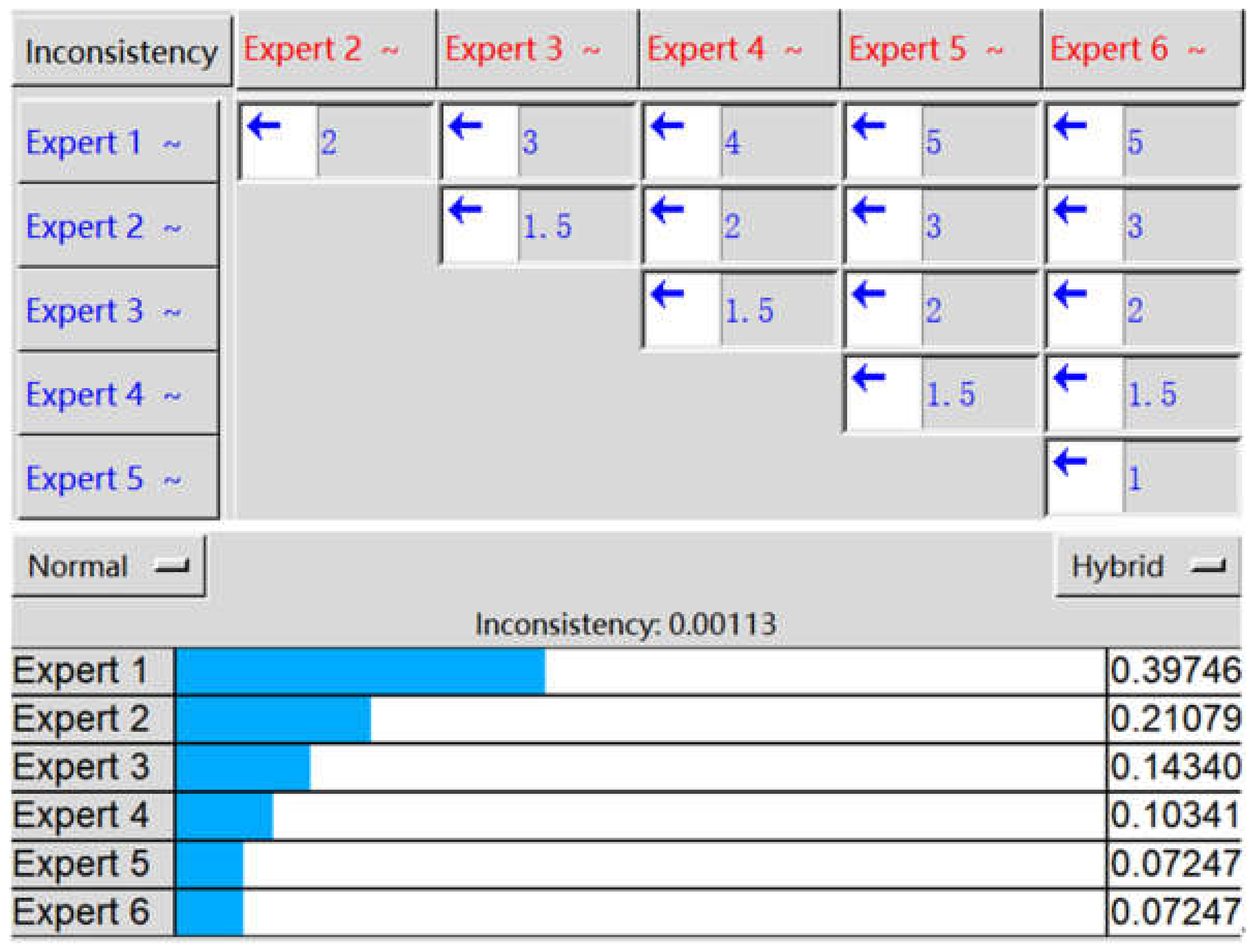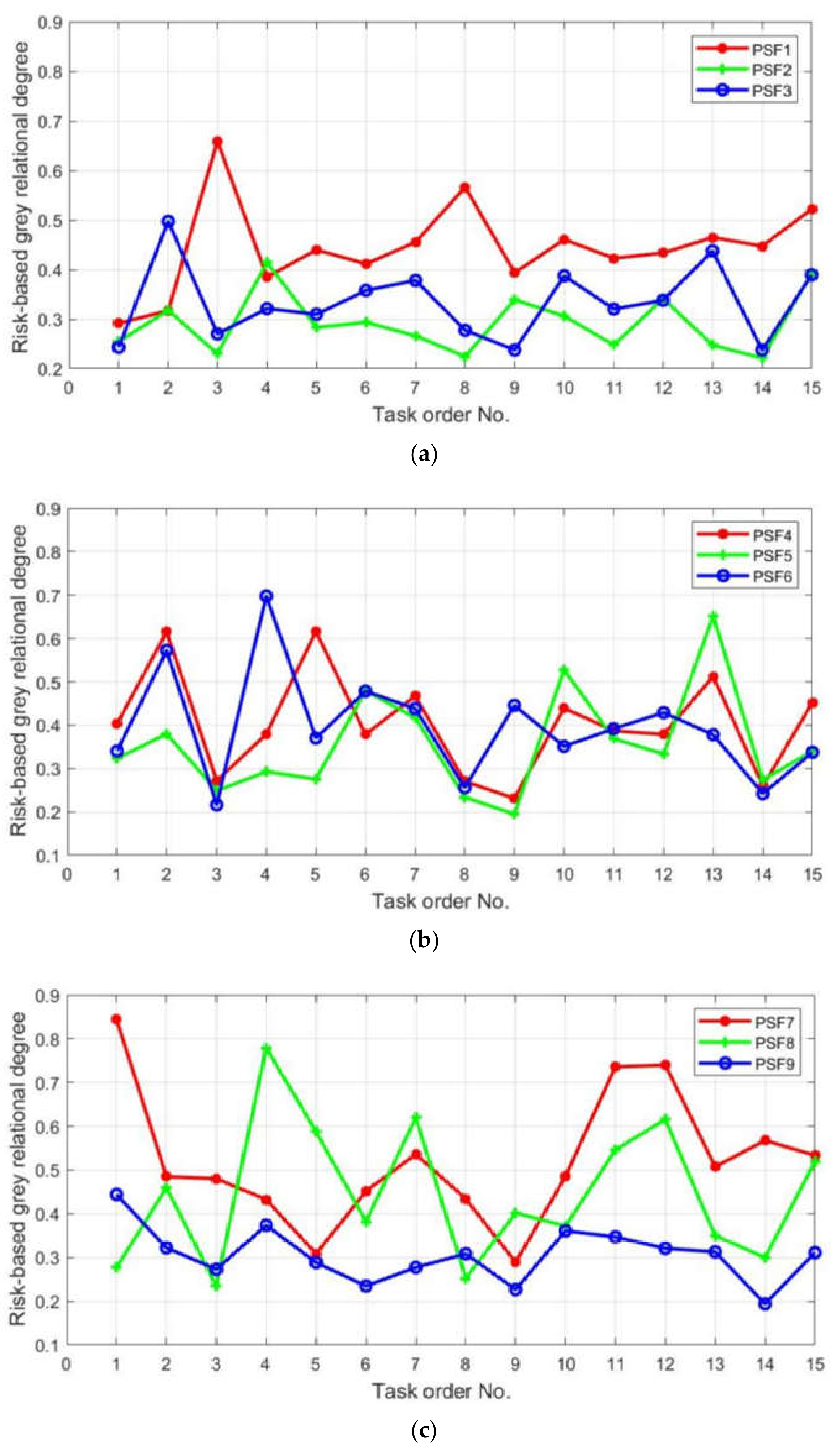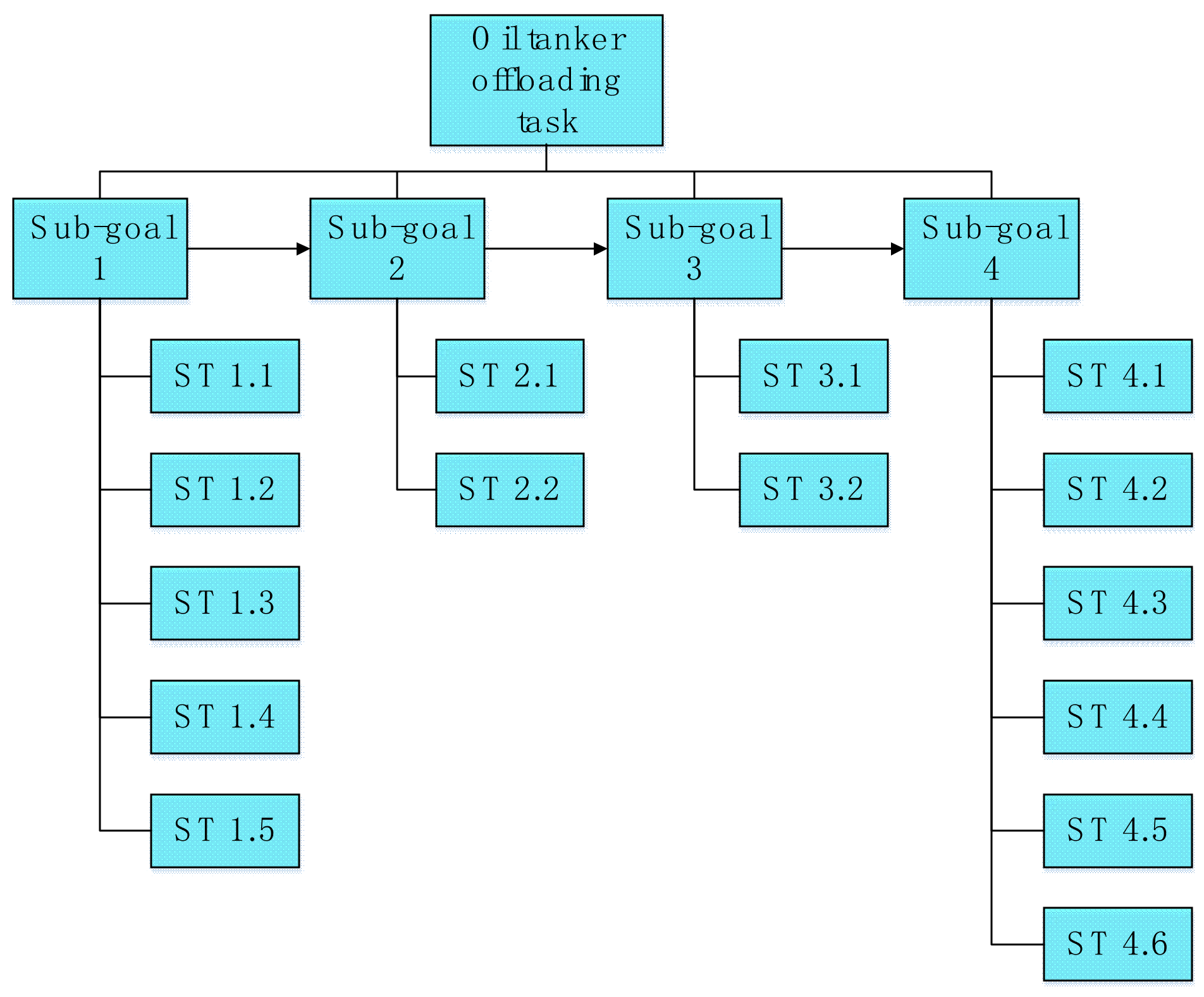1. Introduction
Human error is a considerable challenge to safety in an oil tanker offloading process. Many published reports and academic articles have concluded that over 70% of accidents are closely associated with human errors in the marine industries and the oil and gas industries [
1,
2,
3,
4]. Therefore, preventing human error is important to ensure safety during oil tanker offloading work.
It is acknowledged that human error is associated with many Performance Shaping Factors (PSFs) [
5,
6], and many publications have indicated different PSFs have different weights on a human error, so finding key PSFs and control them can help to avoid human error strategically [
7,
8]. However, the way for effectively identifying key PSFs is still a challenge.
Thus far, many techniques have been designed to evaluate the different weights of different PSFs. Among them, the Analytic Hierarchy Process (AHP) and Analytic Network Process (ANP) are two typical methods [
9,
10]. Both AHP and ANP have the function to estimate the importance weights of PSFs for determining the key one during operating a task [
11]. AHP is suitable if all selected PSFs are mutually exclusive, and ANP is otherwise applied [
12]. These techniques have been applied widely to assess and rank the significance weight degrees of PSFs. AHP has been selected to recognise the important PSFs for human error in marine-related operations for the oil and gas industries [
13,
14,
15]; ANP has also been used to determine the weight value of each PSF for human error to ensure safety [
6,
10,
16]. However, AHP and ANP may not a perfect choice. Both AHP and ANP have insufficient considerations about dynamic scenarios in a task, because they mostly treat a task as a static whole. The second limitation is consistency tests are required for AHP and ANP. When there are too many PSFs, large efforts are needed to ensure the constructed pairwise comparison matrix can pass the consistency test. The third limitation is that the historical data of PSFs are always limited and imperfect.
In 2017, a risk-based approach was published to rank key PSFs for the operations in the main control room of nuclear power plants [
17]. It provides a well-designed procedure that can assess plenty of PSFs. The definition of “Risk” is used as the standard to identify key PSFs, which makes each PSF can be evaluated reasonably from different dimensions (likelihood and impact) [
17]. However, the approach is still not strong enough to provide a robust PSF ranking. As PSF data recording is insufficient, research has used questionnaires for collecting risk data, and the mean value of the collected data for each PSF is used to describe each PSF. However, only using a simple mean value to describe a PSF may not reflect the true performance, since the mean value can be dominated by unreasonable maximum data or minimum data. Another significant issue is that research also gives limited consideration to the dynamic scenarios of a task, but a task is always a dynamic process [
18,
19]. Therefore, to rely only on this approach is not comprehensive enough, but it is beneficial to judge PSFs by the definition of “Risk”, which can make a rational identification and ranking.
According to the above description, it can be found that the poor recording of PSF data, and the limited consideration on dynamic scenarios in a task are two main challenges to effectively identify key PSFs for human error prevention. In addition, when there are plenty of PSFs involved, the efforts used for finding the key PSFs may large. Therefore, this study will focus on dealing with the poor quality of PSFs’ data recording and to consider the dynamic scenarios in the oil tanker offloading task in a rational way.
As the recording of PSF’s data is always incomplete and imperfect, grey theory should be an option for our research. Proposed by Deng, this theory is specifically designed for a system with incomplete and imperfect information [
20], and many grey theory-based methods have been developed [
21]. Among them, Grey Relational Analysis (GRA) is a typical one which has been applied to identify safety- and risk-related key factors [
22]. This method is based on the similarity of geometric shape formed by all grey data of each contributing factor, so the influence from each datapoint can be easily included without extra efforts, such as through a consistency test. Thus far, GRA has been combined with Failure Mode and Effects Analysis (FMEA) to find the important failure modes among plenty of failure modes of tanker equipment, medical devices, and steam turbine system in power plants from the aspects of occurrence, severity, and detection [
23,
24,
25,
26,
27]. Moreover, GRA has also been used to identify the key factors that can impact the safety decisions while manoeuvring an autonomous ship [
28]. In addition, many data analysis techniques, such as fuzzy logic and Dempster–Shafer theory, have been integrated with GRA [
23,
24,
29,
30]. Learning from the combination of GRA with FMEA and concerning this study, we can combine GRA with the definition of “Risk” to perform a grey and risk-based method for rationally finding key PSFs to prevent human errors. Six experienced domain experts are invited for collecting risk-based grey data to support the GRA practice. In order to consider the impacts caused by the differences among the six experts, AHP is used to determine their importance weights. It should be noted that we have enough information about each expert for applying AHP.
As studies have indicated that a task is always performed dynamically in its different stages, the different performance of each PSF at different stages of a task must be considered. To obtain an effective result that can truly reflect the oil tanker offloading work, HTA should be adopted. It can effectively decompose a task into several Sub-tasks (STs) [
31]. In this study, each PSF is considered and assessed in each ST, and with HTA, the changes of each PSF in the task operation process can be analysed for human error prevention.
Based on the description above, this study aims to integrate HTA, AHP, GRA, and the definition of “Risk” together for effectively identifying key PSFs to strategically prevent human error. In the proposed method, HTA is conducted for considering the dynamics scenarios (the changes of each PSF during operating oil tanker offloading work); AHP is used to estimate the importance value of each invited expert; and the combination of GRA and the definition of “Risk” is used to deal with the imperfect and incomplete recording of PSFs’ data for identifying some key PSFs. Namely, through the proposed method, this study can consider the dynamic scenarios and each expert’s importance weight; moreover, this proposed method can simultaneously take plenty of PSFs’ performance at different task stages into consideration; furthermore, it can deal with the incomplete and imperfect data of PSFs and to identify some important PSFs in a grey and risk-based rational way. Those together form the main contributions of this research.
The remainder of this article is arranged as follows.
Section 2 presents the methodologies used in this study and the steps of using the proposed approach for this study.
Section 3 validates the proposed approach through a case study of an oil tanker offloading operation. Our research is compared and discussed in
Section 4, and
Section 5 relates our conclusions, limitations, and future work.
4. Comparison and Discussion
If only using the definition of “Risk” and the expert’s importance weight (traditional risk-based approach), the results for each ST and the whole task can also be determined, still using PSF1 in ST 1.1 as an example. Based on the experts’ importance data, the collected likelihood data, and the collected impact data in
Table 6,
Table 7 and
Table 8. The likelihood data and impact data for PSF1 in ST 1.1 are:
Then, the risk value for PSF1 in ST 1.1 is 0.9231 × 0.7471 ≈ 0.6896. Through this traditional risk-based approach, the risk value of each PSF for each ST can be calculated.
Table 15 gives the result.
With the calculated results in
Table 15, the most important PSF in each ST and the whole offloading task can be determined. PSF1 plays the dominant role in ST 1.3, ST 3.1, and ST 4.6; PSF4 is the key PSF to prevent human error in ST 1.2; PSF5 is the most crucial one in preventing human error in ST 2.1 and ST 4.4; PSF 6 is the top ranking in ST 3.2; PSF7 is the most significant in ST 1.1, ST 4.1, ST 4.2, ST 4.3, and ST 4.5; PSF8 is the priority one in ST 1.4, ST 1.5, and ST 2.2. Moreover, for the whole oil offloading task, PSF7 is the most significant one, which is:
Compared to the results generated by the proposed method in this study, we can find their results are mostly same except for the key PSF in ST 1.5, ST 4.1, and ST 4.5.
Table 16 presents their comparison, which contains the most significant PSF in each ST and the whole task.
These differences may be caused by the different analysing theory and procedure between the proposed method in this study and the tradition risk-based approach. The GRA theory is based on the geometric differences, but the tradition way uses the weighted average value. Due to the reality that PSF-related data are always insufficient and have strong characteristics of grey, we believe that the proposed method is currently a better choice for dealing with human error prevention for our study.
It should be noticed that before this study, the leaders in the selected oil terminal knows that human error is crucial, but they have limited idea on human error prevention, and mostly, they only view training as an effective way to avoid human errors. Therefore, the staff have received frequent training on safety, even though most staff are tired of those repetitive trainings. After this research, the leaders realise that apart from some safety training work, more efforts should be paid to operators’ safety attitude and supports for work and management to prevent human errors during oil tanker offloading process. Through learning the result, the management team in the selected terminal has made a strict reward and punishment policy to encourage staff to find, report, record, and correct any unsafe behaviour, to let people form a more positive attitude to safety. Through this policy, from January to April in 2022, there was no report about abnormal incidents. In addition, the working capacity in that oil terminal increased about 17.5% compared with the data from January to April in the last year.
5. Conclusions
This research provides a grey and risk-based method to identify key PSFs for preventing human errors during an oil tanker offloading task. The highlights of this study are listed as follows:
The proposed method combines GRA process with the definition of “Risk” together to handle the incomplete and imperfect data of each PSF and to rationally rank each PSF;
This study considers the changes of each PSF in different task stages, so the dynamic scenarios are involved;
The method can deal with many PSFs without extra efforts such as consistency tests, so it is user-friendly;
The different weights of each invited expert are considered.
Through the method proposed by this study, it can be concluded that PSF7 (Attitudes to safety, work, and management support) is the key one for the whole oil tanker offloading task. For each ST, PSF7 (Attitudes to safety, work, and management support), PSF8 (Teamwork), PSF1 (Time), PSF4 (Experience/training), and PSF5 (Procedure) should be considered, since they are ranked as the top PSFs in the corresponding STs.
The results can be used for decision makers and safety management teams to strategically make some effective plans to prevent human errors for oil tanker offloading safety. For instance, except for the reward and punishment policy, more education and broadcasts for strengthening safety attitudes are required to increase the performance level of PSF7 (Attitudes to safety, work, and management support); crew communication skills and mutual trust among each team member should be improved to ensure a high level of PSF8 (Teamwork); more time for dealing with regular procedures and abnormal scenarios can enhance the performance of PSF1 (Time); more targeted trainings are necessary for the improvement of PSF4 (Experience/training); and some operation procedures should be optimised to make sure PSF5 (Procedure) is at good performance.
Apart from the application in the oil tanker offloading process, the proposed method is also suitable to other human-related and safety-related applications for finding key PSFs to prevent human errors. However, this study still needs further developments. Fuzzy characteristics should be involved in the proposed method, and the dependency level of each ST should also be analysed for better calculating the total risk-based grey degree of each PSF. In the future, efforts should be made to improve on this study.

